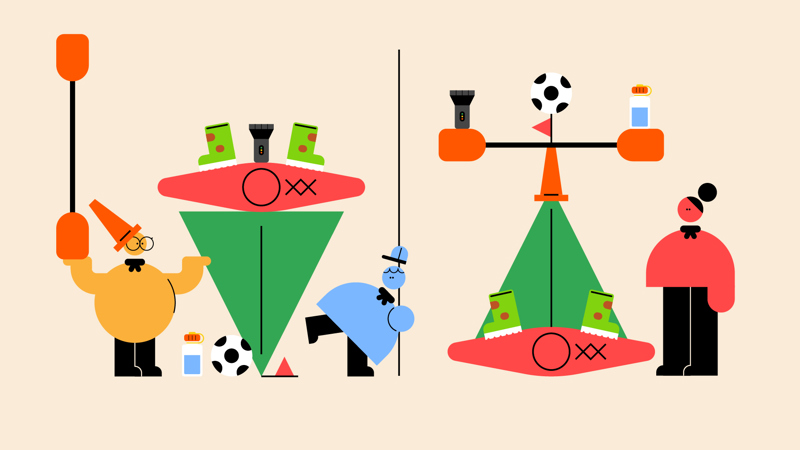
Building memories
You’ll need
- A set of items to create a display, and an identical set of items for each team.
Before you begin
- Gather your items – if you’re playing inside, you could use cups, pens, chairs, and toys. Outdoors, you could use items like chairs, tents, sticks, and pioneering poles.
- Set up a display using the items – arrange, balance, and layer them to create a scene for the players to copy. The display must be hidden from the teams – put it in another room, or tuck it away behind a table.
Play the game
- Split into teams, and give each team their set of items. They must have all of the items they need to copy the display.
- Teams should choose one team member to be the runner. The runner should come and view the original display – they can look for 20 seconds.
- The runner should re-join their group, and give their team instructions so they can recreate the display. The runner can’t touch any items – they can only use verbal instructions.
- Teams can have a conversation with their runner and ask them any questions they have.
- The challenge is complete when the team has recreated the display as accurately as they can. The person leading the game should reveal the original display, and teams should compare their creations.
- If you want to, you can play again with a different display, and different runners.
Reflection
This game needed you to be a good team player. Were you all working towards the same thing? Did you all do the same job, or did you play different parts in your team? What part did you play? What was important for good teamwork? Did you have to listen to and trust your teammates? Was that easy?
To succeed, you also needed to solve problems. What problems did you expect to have before you started this challenge? What problems did you end up having – were they the same as you’d predicted? How did you find a solution? Did you have to try a few ways to solve each problem? Would you do anything differently if you did it again?
Safety
All activities must be safely managed. You must complete a thorough risk assessment and take appropriate steps to reduce risk. Use the safety checklist to help you plan and risk assess your activity. Always get approval for the activity, and have suitable supervision and an InTouch process.
- Adapt the complexity of the display – add or remove elements, or combine items in more intricate ways.
- Give teams extra items, which don’t belong in the scene – to make it extra tricky, use similar items (for example give them a red, a green, and a blue building block, when they only need one blue block).
- Give teams a time limit to complete their copied display.
- Give runners more chances to view the original display – allow them to check halfway through, or check their work at the end.
- Limit the words the runner is allowed to say – now, they can’t name any of the items used. For example, they can’t say ‘chair’ so they’ll have to describe it by saying ‘the thing you sit on’.
Runners could go in pairs if people don’t want to go alone.
All Scout activities should be inclusive and accessible.
Young people could set up a display as a team, and then swap with another team (who have also created a display) to play.

